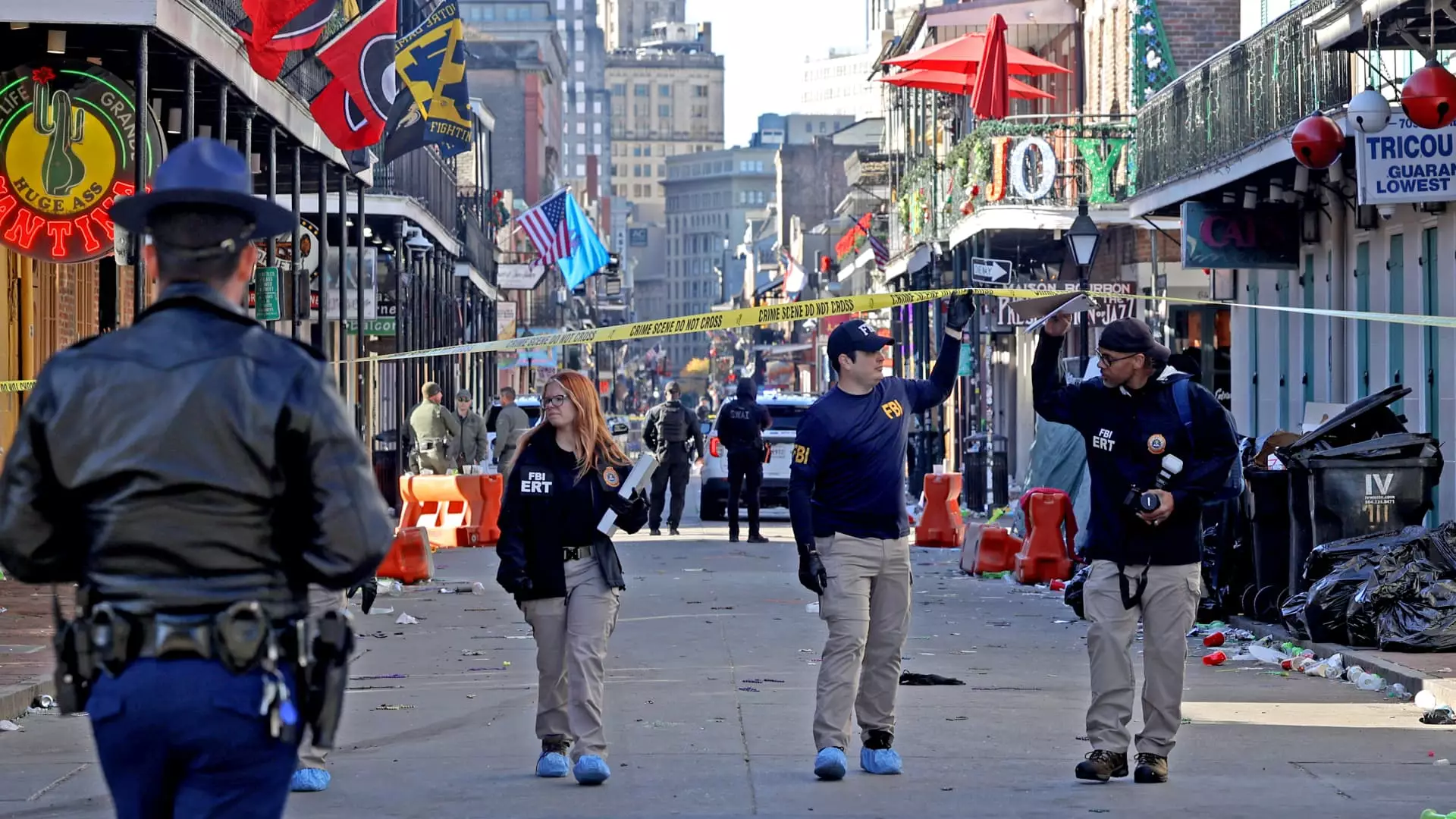On the dawn of January 1, 2023, New Orleans was thrust into chaos as an individual drove a pickup truck down Bourbon Street, leading to grave consequences: 15 lives lost and more than 30 injuries. The timing of this incident, occurring amidst New Year’s celebrations, has left citizens and authorities alike grappling with a renewed sense of vulnerability in urban spaces historically known for their jubilance. As if that incident was not dramatic enough, just hours later, an explosion outside the Trump International Hotel in Las Vegas added an additional layer of fear and intrigue, igniting the imaginations of conspiracy theorists and prompting immediate investigations into potential links between the two events.
Law enforcement officials are pursuing an investigation into possible connections between the New Orleans car-ramming suspect, Shamsud-Din Jabbar, and the deceased involved in the Las Vegas explosion. The authorities are piecing together a narrative that ties these tragic events to a greater narrative of potential military involvement, underscoring the need for an intricately woven security response.
Jabbar, a 42-year-old Army veteran, served in various human resources and IT capacities from 2006 until 2020, with a notable deployment to Afghanistan. This enhances the narrative surrounding veterans and mental health, prompting discussions about the psychological impacts of military service that might contribute to violent behavior upon return to civilian life. The individual involved in the Las Vegas attack also reportedly had prior military experience, leading investigators to explore whether their shared backgrounds could illuminate a sinister pattern.
The intertwined nature of both perpetrators creates a precarious situation for investigators. By leveraging the FBI’s resources, law enforcement is not only examining the military histories of these individuals but is also delving deeper into their motives, affiliations, and possible networks. As authorities piece together the backstories of Jabbar and the unidentified suspect from Las Vegas, the urgency of actively addressing the escalating trend of veteran involvement in violent crime surfaces.
The grim events of New Year’s Day paint a harrowing picture. Chanting and celebration turned to screams and confusion; scenes of carnage marked the aftermath on Bourbon Street. Witness accounts describe a driver intent on maximizing destruction, highlighting the enhanced danger surrounding public festivities. New Orleans Police Superintendent Anne Kirkpatrick’s stark statement outlines the calculated intent behind the attack, emphasizing the deliberate nature of the violence: “He was hell-bent on creating the carnage and the damage that he did.”
The investigation has also focused on infrastructural failures that may have allowed such devastation. In comments from Mayor LaToya Cantrell, the absence of protective bollards due to ongoing construction raised questions about preventive safety measures and urban planning. Such discussions may eventually lead to greater scrutiny around city infrastructures and their capability to safeguard citizens during large gatherings when potential threats are amplified.
In Las Vegas, the explosion outside Trump Tower after the car-ramming incident sparked heightened security measures nationwide, attesting to the interconnectedness of the perceived threats. The response was immediate; security was quickly tightened around key sites, including Trump towers in New York and Chicago, responding to fears that such acts might not only be isolated incidents.
As investigations continue, the FBI and New Orleans law enforcement are working with Turo, the vehicle rental company linked to both incidents, aiming to untangle the complex threads binding these events. Detailed searches have taken place in Houston, involving an extensive collaborative effort between local law enforcement and FBI units specializing in counterterrorism.
The community has responded with a mixture of grief, fear, and resilience. As mourners gather in remembrance of the victims, there is a pressing need for accountability and action. The tragic loss of life forces society to confront difficult questions about mental health support for veterans and the overall safety of public spaces.
The Sugar Bowl football game — a high-profile event — was set to proceed as planned, symbolizing a fragile return to normalcy amidst turmoil. However, the specter of violence looms large, emphasizing that the impacts of such attacks reach far beyond immediate casualties. In the face of rising extremism and acts of terror, municipalities must prioritize strategic safety measures and foster an environment that promotes healing rather than fear.
As the investigations unfold, the connections between these violent acts must be thoroughly examined, prompting discussions on broader societal implications and the urgent necessity of safeguarding communities nationwide.

